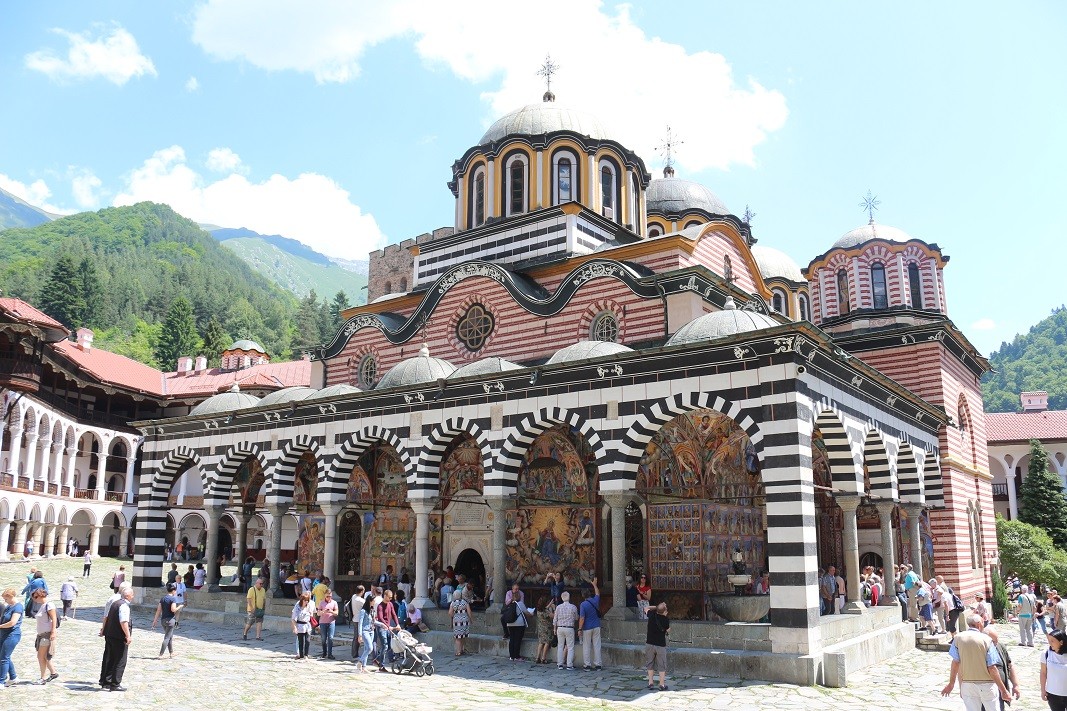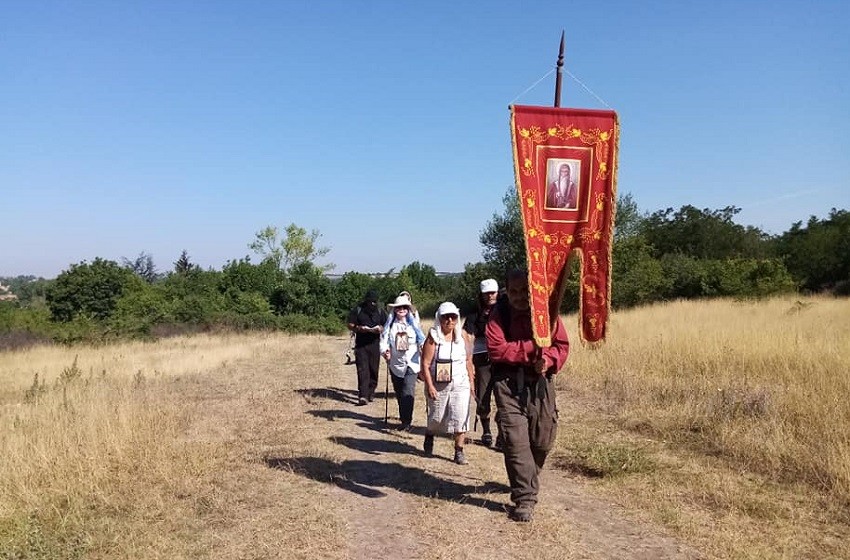To go on a pilgrimage to yourself with the help of faith. This adventure – a symbiosis between the spiritual and physical world, human endurance and faith, past and present is not something unknown, especially to us Europeans.
One of the most famous pilgrimage routes is El Camino de Santiago, a network of roads in several different countries, with a total length of about 1,500 km, which lead to one place - the Cathedral of Santiago de Compostela in the Spanish city of the same name. It is there that the relics of James the Great, also known as James, son of Zebedee, Saint James the Great, or Saint Jacob, one of the twelve apostles of Jesus Christ, are kept.
Since 2019, Bulgaria has had its own Holy Path following the relics of Saint Ivan Rilski (John of Rila).

"The idea is to follow the path of the last of the several transfers of the relics of St. Ivan Rilski, in 1469 from Tarnovo to the Rila Monastery”, one of the main organizers of the pilgrimage, the mathematician and professor at the University of Veliko Tarnovo, Dr. Pascal Peperkov, told Radio Bulgaria.
“A procession that practically passed through half of Bulgaria - from Tarnovo it reached Nikopol on the Danube, then the administrative center for almost all of Northern Bulgaria, from there to Sredets (present-day Sofia) and then to the Rila Monastery. This event was described back then by deacon Vladislav Gramatik. He describes 10 toponyms, 10 places through which it is certain that the relics of the saint passed. And what we are doing now is to restore the historical route along them. We not only restore the path by walking, but we also do it by prayer. This is how we use the once-sanctified path of the saint's relics to approach God through prayer. Prayer is a form of conversation with the Creator and an attempt to pray for prosperity for the participants in the procession and for our entire nation."

As every year, this year the pilgrimage along the path of the relics of Saint Ivan of Rila begins on July 1 from the town of Veliko Tarnovo and will end on August 12 in the Rila Monastery, the biggest monastery in Bulgaria. Among the participants are the two main organizers of the spiritual march - university professors Pascal Piperkov and Evgeni Koev. They are also the scientists who made the most important studies about the transfer of the relics of the saint.
"My colleague Evgeni Koev has been dealing with this issue since 1999. He is among the initiators of building a chapel of St. Ivan Rila the Wonderworker on Mount Krastets in Stara Planina - one of the places through which the relics passed from Sredets to Tarnovo. I got involved in the studies in 2014-2015 and in the next few years together we outlined the exact route of the procession.”
And so, five years ago, on the occasion of the 550th anniversary of the return of the relics of St. Ivan Rilski to the monastery founded by him, faith once again marched through these lands in the face of nearly 2,000 pilgrims. "The first pilgrimage drew really great interest. Nearly 50 people covered the entire distance in a month," recalls Piperkov. In the following years of a pandemic, the participants were significantly fewer, but the enthusiasm of the organizers does not abate.

"This year, the march will take a little longer, as the idea is to be able to withstand the overall load with shorter daily hikes. If in the first years we had days with 30 kilometer hikes, now they will be between 10 and 20 kilometers a day to make it more accessible. We are leaving with a small group of 20 people from Veliko Tarnovo, and I hope there will be enough people on the way to keep the fire of the idea burning and to complete the march successfully.”
The route is divided into five stages of ten days each. The first is Veliko Tarnovo - Nikopol (30 June – 08 July 2023), followed by Nikopol-Pleven-Lukovid (9 July – 15 July), Lukovit- Vratsa (16 July -25 July), Vratsa - Sofia ( 26 July – 2 Aug) and ends with the march from Sofia to the Rila Monastery (3 July – 12 July).
Anyone who wishes can participate in each of the stages for as long as they want and have the opportunity, Pascal Piperkov tells us. And he invites those living in the various towns and villages through which they will pass, to join the Bulgarian Holy March and its participants, to walk with them. "This is again empathy - to walk together part of the way with prayer. And collective prayer is much stronger than individual prayer," he says.
And if we return to the comparison with the Camino de Santiago, Pascal Piperkov says that the Bulgarian route is still not well-marked and safe enough for independent pilgrims and recommends that it be done only in a larger group.
In the future, it is expected that thisBulgarian holy path will be marked and places to stay will be built in all the towns and villages it passes through.

Read also:
Nearly 40 years ago, the Bulgarian Orthodox Church Communities (BOCC) in Western and Central Europe were concentrated in several cities. After our country joined the European Union and with the growth of the Bulgarian diaspora, the Bulgarian church..
The Feast of the Annunciation is the day when God's promise for the salvation of the human soul from the eternal torments of darkness is fulfilled. Its message is that God loves us, says Father Bozhidar Marinov from the "Exaltation of the Holy Cross..
Veliko Tarnovo is proud of its glorious past, encoded in the city’s holiday, associated with the day of the Holy Forty Martyrs – the spiritual patrons of Bulgaria's medieval capital. On the day of the 40 followers of Christ (March 22 according to..
Pipes from the end of the 17 th , the 18 th and the 19 th century and the tradition of growing tobacco in Bulgaria are presented in the newest..

+359 2 9336 661
